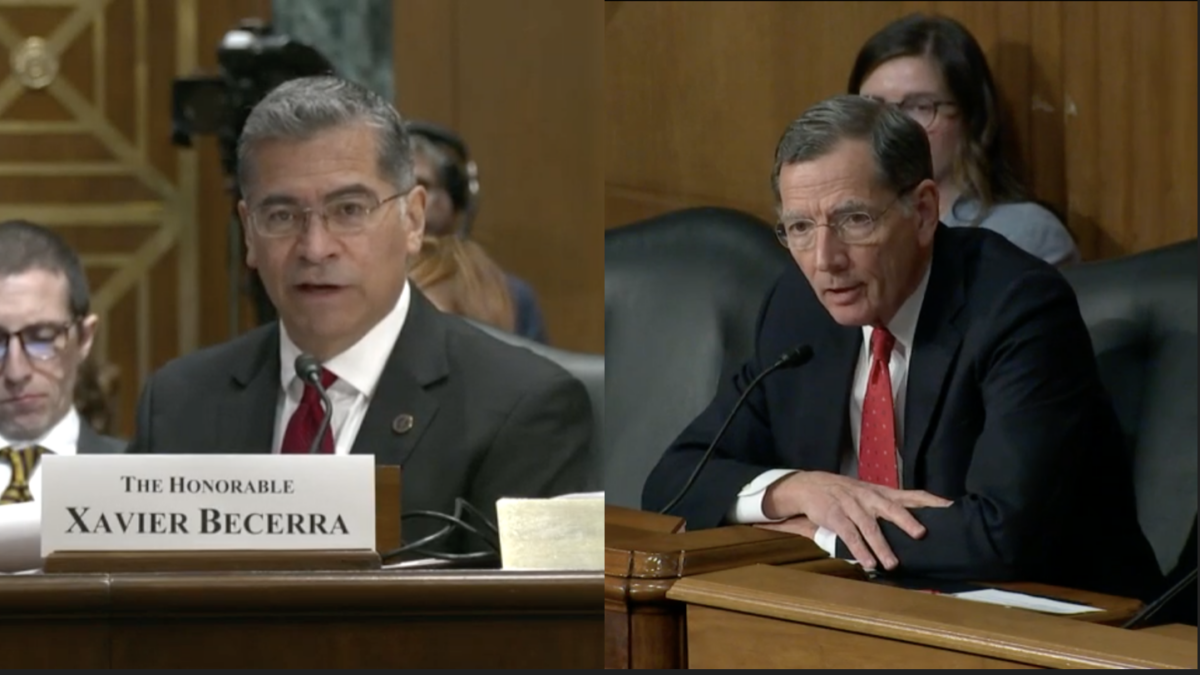
The entire country has been obsessed with the House Intelligence Committee’s memo about alleged 2016 surveillance abuses, but there are other important things happening in this country. As another federal government funding deadline approaches, lawmakers need to answer an important question: What are we going to do with President Obama’s “Dreamers?”
The program for the children and young adults of illegal immigrants is set to expire in March, and Feb. 8 marks an important for Congress to take decisive action on the matter.
President Trump recently led the way with a grand bargain of sorts to offer on immigration.
Here are the four key elements of his plan.
- A 10- to 12-year path to citizenship for about 1.8 million DACA-eligible illegal immigrants.
- $25 billion in funding for border security measures, including a wall
- The end of the visa lottery system, and a new limit on chain migration to the spouses and minor children of immigrants
- A switch from the current family-based legal immigration system to a merit-based system
Trump said his plan is “a fair compromise,” in which “nobody gets everything they want, but where our country gets the critical reforms it needs and must have.” So far lawmakers from both parties have refused to take his offer seriously, and that’s unfortunate.
Democrats have rejected any changes to the legal immigration system as part of a DACA fix, even though Trump is willing to offer amnesty for more illegal immigrants than Democrats could have hoped for. Republicans, on the other hand, following traditional GOP thinking when it comes to immigration, have proposed multiple bills with a much narrower focus.
For example, the most recent bill proposed by Republican Sen. John McCain and Democratic Sen. Chris Coons offers a path to citizenship for young illegal immigrants who have lived in the U.S. since Dec. 31, 2013 — is a larger group than would be covered by Mr. Trump’s proposal. In exchange, their bill calls for a comprehensive study to determine what border-security measures are needed, which falls short of the Trump’s demand for border security funding and legal immigration reform. The McCain-Coon bill is very similar to a bipartisan bill from the House by Republican Reps. Will Hurd and Pete Aguilar.
Trump has said he will walk away from any immigration compromise if his plan is rejected. The most likely outcome this week is that Congress will pass another stopgap measure to keep the government funded for a short time in order to buy more time to work out an immigration compromise.
That would be a disappointing outcome, because I don’t have any confidence that lawmakers can come up with a better bill when given more time. Our nation hasn’t enacted any significant immigration reform for decades. We still live under the framework set by the 1952 and 1965 Immigration Acts, with a complicated immigration system that emphasizes family ties over merit-based immigration.
Reforms since 1965 show that simply exchanging amnesty for illegal immigrants with some border security measures has done little to stop the growth of illegal immigration. When President Reagan signed the Immigration Reform and Control Act of 1986, he legalized around three million illegal immigrants in exchange for border security measures. He promised this legislation would fix the illegal immigration problem. Yet, the illegal immigration population in the U.S. has grown to around 12 million.
If lawmakers continue down this same road, it’s very likely we will have to talk about what to do with 20 million illegal immigrants 10 years from now. The only way to prevent that from happening is to enact bold legal immigration reform that fundamentally changes who and how many we admit into our country. So, while I don’t agree with all the elements in Trump’s grand bargain, I believe it’s time for lawmakers to take his proposal seriously, rather than trying to work around it. The president is right that any proposal on amnesty must be combined with legal immigration reform.
For decades, our immigration has given overwhelming preference to family reunions (aka chain migration) for applicants who had family already residing in the U.S. This approach doesn’t serve our nation’s economic needs because (a) the quota for family reunion is not based on labor-market demand, and (b) the visa preference hierarchy favors the old (parents of U.S. citizens and permanent residents) and the young (children younger than 21 years of age) but discriminates against those who are likeliest to be the most productive — against people who don’t have family connections, but do have knowledge, skills, and experiences and can contribute to our economy and be a productive citizen.
In addition, supporters of such a system ignore a sad irony that our immigration system, which is ostensibly keyed to family reunification, ends up causing a great deal of pain for many families due to its long delays and huge backlogs. The visa bulletin board published by the State Department illustrates the problem. It shows what priority dates are current for different visa type applicants. As of February, 2018, siblings of U.S. citizens who were born in Mexico can expect to wait 20 years before immigrating to America (24 years if from the Philippines). Married adult children from Mexico and the Philippines can anticipate waiting 23 years. Such a status quo doesn’t benefit legal immigrants. So a good question for Democrats is, why would they reject any change to this system?
It’s time to acknowledge that the current family reunion system is broken. Therefore, I support Trump’s call to reduce chain migration by prioritizing family members “to spouses and minor children only.” The best way forward for America is to emphasize merit-based immigration, which gives higher preference to people who have skills and experiences to contribute, and to entrepreneurs who want to invest in America and create job opportunities for Americans.
I do want to caution Trump and some Republican lawmakers that a merit based skilled-worker program doesn’t mean we only seek to admit well-educated applicants. One criticism I have for Senator Tom Cotton’s RAISE Act is that the merit criteria he proposed overly emphasizes admitting the “good student” type of immigrants, those who are well educated. But if we truly want to learn from Canada and Australia, two countries that have implemented merit-based immigration systems successfully for years, we should notice these countries have both a high skill worker’s program and a skilled trade program. The latter is for applicants who have less formal education but demonstrate verifiable skills/experiences in particular trades that these economies need. Our economy is dynamic so we should have similar programs to attract the various skilled workers our economy needs, not just someone who has a college degree.
In order to make the merit-based immigration successful, I recommend the government outsource the creation and maintenance of a national job/skill database to a private U.S. company, which would enable us to know in real time what type of skills are in demand right now and how many skilled workers our economy needs.
To keep our immigration system focused on attracting skilled workers, we should eliminate ineffective and non-merit based visa programs such as the visa lottery program and the more than two dozen special programs. However, I disagree with the call of Trump and some Republican lawmakers to slash legal immigration by 40 percent in one year and keep the visa quotas for employment-based immigration unchanged.
Current demand for skilled laborers far exceeds the annual visa quotas of 140,000, which causes a backlog of five or more years of waiting time for green cards (permanent residence) in the Skilled Workers and Professionals category. Analysis of future demand and pending backlogs indicates the problem is likely to grow worse, unless Congress changes the numerical limits on employment-based immigrant visas. If we truly want to transform our immigration system into a merit-based system, our visa quotas for skilled workers should reflect the real needs of our economy. Therefore, at least a portion of the annual immigration visa quotas we save from eliminating ineffective programs should be used to boost the skilled workers category. Such a boost would reduce the incentive for illegal immigration and reduce the incentive for businesses to hire illegal immigrants when they are guaranteed a pool of legal workers.
Congress can and should debate how to build upon the immigration framework Trump proposed and make it better. What Congress shouldn’t do is ignore his framework completely and fall back to the same old, tired approach that has failed many times before. The American people are losing patience and are demanding our government to do something with our broken immigration system. It’s time to take Trump’s grand bargain seriously.









